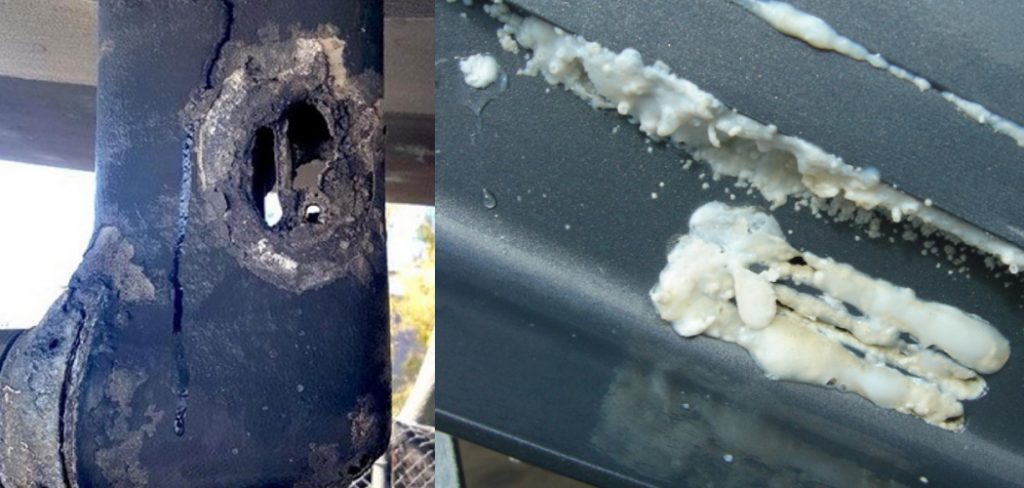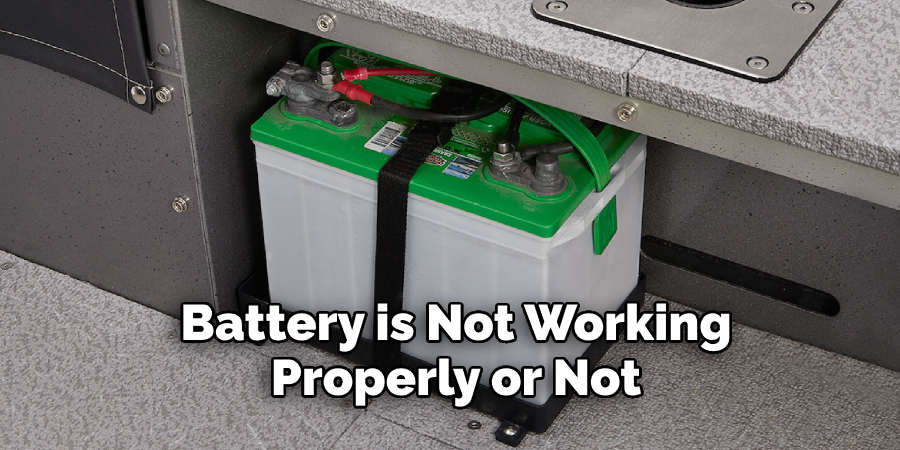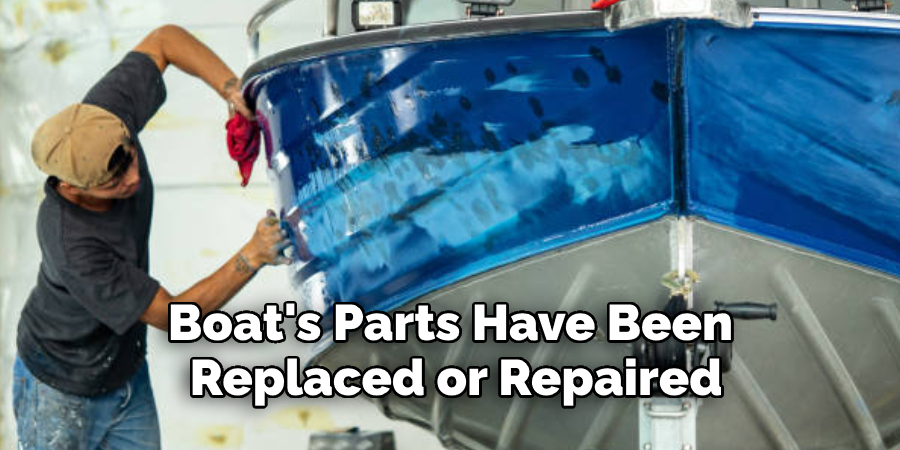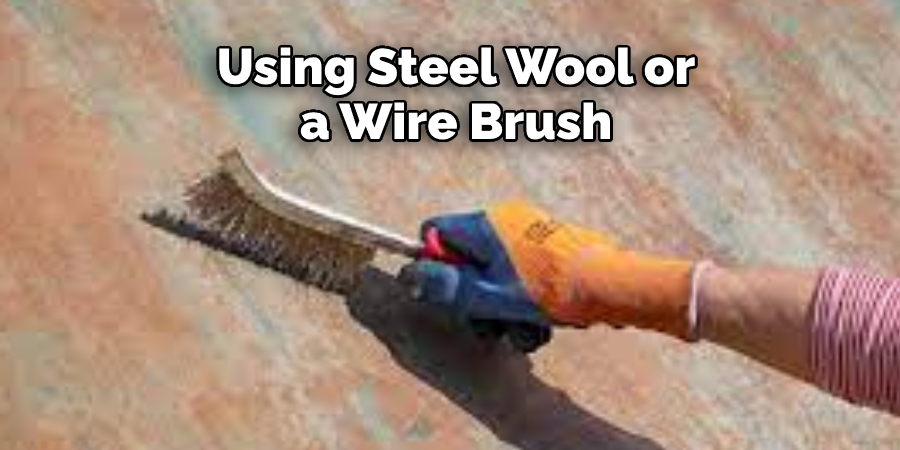If you own an aluminum boat, you will have to deal with electrolysis sooner or later. Unfortunately, this process can cause serious damage to your boat if left unchecked. In this post, we’ll show you how to fix electrolysis in aluminium boats. Follow these steps, and you’ll be back on the water in no time!

Summary: Aluminium boats can suffer from electrolysis, a process where the aluminum corrodes due to contact with dissimilar metals or electricity. To prevent this corrosion, it is important to inspect for any metals that may be causing a galvanic reaction, such as zinc anodes and sacrificial rods.
Any foreign objects should then be removed, and if necessary, an isolator and/or galvanic isolator should be installed. Protecting your boat by regularly inspecting and maintaining it will help keep it in the best condition possible.
What Is Electrolysis in Aluminum Boats?
Electrolysis is a chemical reaction that can occur in aluminum boats when the metal comes into contact with water. This interaction can cause the metal to break down and weaken, potentially leading to structural damage. While many boat owners take steps to prevent electrolysis by regularly cleaning and maintaining their vessels, it can still be a problem in some cases.
In addition to causing weakening and damage, electrolysis can also lead to the formation of corrosion on the surface of the metal. This can cause further deterioration and may eventually lead to holes or leaks in the boat’s hull. While there are ways to repair electrolysis damage, it is often best to prevent it from occurring in the first place.
Regular maintenance and inspection can go a long way towards keeping your boat in good condition and preventing expensive repairs down the road.
Why Should You Fix Electrolysis in Aluminium Boats?
Aluminum boats offer many advantages over other types of boats. They’re lighter, so they require less horsepower to move; they’re more durable, so they last longer; and they’re easier to maintain so that you can spend more time on the water and less time in the shop. However, aluminum boats are also susceptible to a type of corrosion known as electrolysis.
If left unchecked, electrolysis can cause serious damage to your boat. The good news is that it’s relatively easy to fix, and doing so can help extend the life of your boat. Here’s a look at why you should fix electrolysis in aluminum boats.
Electrolysis occurs when two dissimilar metals are placed in an electrolytic solution, and an electrical current is applied. The electrical current causes one of the metals to dissolve into the solution while the other metal is deposited on the surface of the metal.
In the case of aluminum boats, the aluminum is dissolved into the water, while the steel or iron in the boat’s hardware is deposited on the surface of the aluminum. Over time, this process can cause serious damage to your boat.
7 Steps to Follow on How to Fix Electrolysis in Aluminium Boats
1. Check the Battery
The first step is to check the battery. If the battery is not working properly, it will not be able to provide the power needed to run the electrolysis process. Additionally, if the battery is old or damaged, it may need to be replaced.

2. Clean the Boat
The next step is to clean the boat. This will remove any dirt or debris that may be causing the electrolysis process to malfunction. Additionally, it is important to ensure that all the boat’s parts are free from corrosion before proceeding.
3. Inspect the Hull
After the boat has been cleaned, it is time to inspect the hull. This step is important because the hull is what protects the boat from electrolysis. If there are any cracks or holes in the hull, they will need to be repaired before proceeding.
4. Replace Damaged Parts
If any of the boat’s parts are damaged, they must be replaced before proceeding. This includes things like corroded wires and damaged batteries. Additionally, any parts that are not working properly will need to be replaced as well.
5. Connect Everything Properly
Once all of the boat’s parts have been replaced or repaired, it is time to connect everything properly. This includes making sure that all of the wires are connected correctly and that the batteries are properly installed.

6. Test Everything Out
After everything has been connected properly, it is time to test everything out. This can be done by starting the electrolysis process and ensuring it works correctly. Additionally, it is important to make sure that there are no leaks in any of the connections.
7. Enjoy Your Fixed Boat!
Once you have followed all of these steps, you should have a fully functioning electrolysis system in your aluminum boat! So enjoy your fixed boat and feel confident knowing you have completed this repair project!
That’s it! You’ve now learned how to fix electrolysis in aluminium boats. Follow these seven steps, and your boat will run smoothly again in no time.
How to Spot Electrolysis in your Boat
Although electrolysis is often thought of as a problem that only affects boats made of metal, it can actually cause damage to any type of boat. Whether made of fiberglass, wood, or metal, all boats are susceptible to electrolysis if they are not properly protected. Electrolysis occurs when an electrical current passes through a conducting material, such as metal. This process causes the metal to corrode and break down.
The most common symptom of electrolysis is a series of small pits or holes in the boat’s hull. These pits are usually most noticeable when the boat is attached to its dock or mooring, where the electrical current is most likely to enter the water. If left unchecked, electrolysis can cause serious damage to a boat, eventually leading to structural problems.

To prevent electrolysis, it is important to ensure that all electrical components on your boat are properly grounded and that the hull is properly protected from stray currents.
5 Causes of Electrolysis in Aluminium Boats
There are a few different things that can cause electrolysis in aluminum boats. One is using the wrong type of metal when repairing the boat. Another is using dissimilar metals in the boat’s construction. For example, this can happen if the boat’s hull is made of aluminum and the fittings are made of stainless steel. Over time, the two metals will start to corrode and create an electrical charge that can damage the boat’s hull.
Additionally, electrolysis can be caused by salt water or polluted water coming into contact with the boat’s hull. This can happen if the boat is moored in a salty or polluted body of water. Finally, electrolysis can be caused by electrical currents passing through the water around the boat. This can happen if a power line or other electrical source is nearby.
If any of these things happen, it’s important to have a professional inspect the boat and make any necessary repairs. Otherwise, electrolysis can cause serious damage to the boat and put everyone on board at risk.
Best Ways to Prevent Electrolysis in Your Aluminium Boat
It’s no secret that aluminum boats are prone to electrolysis. This is because the metal is naturally reactive and can create an electrolytic current when it comes into contact with water. This current can then cause corrosion, pitting, and damage to the boat’s hull. Luckily, you can do a few things to prevent electrolysis from happening in your aluminum boat.
One of the most effective ways to prevent electrolysis is to coat the bottom of your boat with an anti-corrosion paint. This will create a barrier between the water and the metal and help prevent electrolytic currents from forming. You should also use a marine-grade anode when mooring your boat.

This will help the sacrificial metal if an electrolytic current does form. Finally, make sure to inspect your boat regularly for signs of corrosion or pitting. If you catch these problems early, you can usually stop them from causing serious damage to your boat’s hull.
By following these simple tips, you can help to prevent electrolysis from damaging your aluminum boat.
What Not to Do When Trying to Fix Electrolysis in Your Boat
If you’re like most boat owners, you’re always on the lookout for ways to keep your vessel in top condition. One issue that can arise is electrolysis, which is caused by an electrical current passing through your boat’s metal. If left unchecked, electrolysis can cause serious damage to your boat’s hull. So while taking action, if you notice signs of electrolysis, it’s just as important to know what NOT to do.
One common mistake is using steel wool or a wire brush to remove corrosion. Steel wool and wire brushes can create small metal particles that can accelerate corrosion. Instead, use a soft cloth or sponge to remove any corrosion gently.
Another mistake is using paint or primer as a temporary fix. Paint and primer are not designed to withstand the corrosive effects of electrolysis and will only provide a short-term solution. If you’re going to repaint your boat, make sure to use marine-grade paint that is specifically designed for boats.
Finally, don’t forget to address the source of the problem. If an electrical current causes electrolysis, make sure to have the electrical system on your boat checked by a qualified professional. Taking these steps will help to ensure that electrolysis does not cause serious damage to your boat.
Conclusion
Electrolysis is a serious problem for aluminum boats, but there are steps you can take to prevent it from happening. Using a sacrificial anode, keeping the hull clean, and coating it with an anti-corrosion paint or sealant can help extend your boat’s life and keep it in good condition for years to come. Thanks for reading our post about how to fix electrolysis in aluminium boats.
